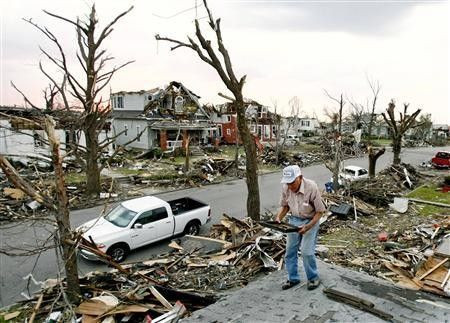2011 Weather: A Record-Shattering Year

Hurricane Katia is barreling along its path to the Gulf Coast, sections of the East Coast are still submerged from Hurricane Irene's storm surges, and Americans are posing a perennial question that has taken on a new layer of incredulity in 2011: How about this weather?
From soaring temperatures to overflowing rivers to an unprecedented spate of costly natural disasters, 2011 has been a year of extreme, record-breaking weather. Hurricane Irene's widespread destruction will almost certainly make it the 10th billion-dollar disaster of the year, eclipsing the mark set in 2008.
Months before Irene churned up water along the East Coast and inundated Vermont, heavy rains and a larger than usual melt of snowpack was deluging towns across the Midwest. The Ohio River, the Mississippi River and the Red River in North Dakota and Minnesota all surged to near-record levels, leading the U.S. Army Corps of Engineers to flood hundreds of thousands of acres of farmland as they opened levees in an effort to redirect water from population centers. The Mississippi also saw a series of record-setting crests, and April broke some 1,300 monthly records for rain. The overflowing Souris River in Minot, North Dakota broke a 130 year old record, overwhelming the city's levees and forcing evacuations.
This is the worst flooding that I can remember on the Missouri [River], Iowa governor Terry Branstad said in early June, when the swollen Missouri threatened to submerge parts of Iowa, South Dakota, Nebraska and Missouri.
Other parts of the country were afflicted by brutal droughts that took a heavy toll on agriculture as crops withered and the price of livestock feed soared. The floods and the drought combined to produce the most extreme spring on record for precipitation, with 46 percent of the country facing abnormal wet or dry conditions.
A scorching July brought some of the highest temperatures on record, with Oklahoma, Texas and the South climate region --including Arkansas, Kansas, Louisiana, Mississippi, Oklahoma, and Texas -- had their hottest July on record. July 21 broke or tied the hottest day on record in more than 100 cities. The National National Oceanic and Atmospheric Administration noted that the July Climate Extremes Index was the highest ever for the U.S.
And then there were the tornadoes. One week in April saw 312 tornadoes across the U.S., including a record-setting 226 in one day that also claimed 334 lives. The April total of 753 tornadoes shattered the previous record of 543 tornadoes in May 2003.
© Copyright IBTimes 2025. All rights reserved.





















